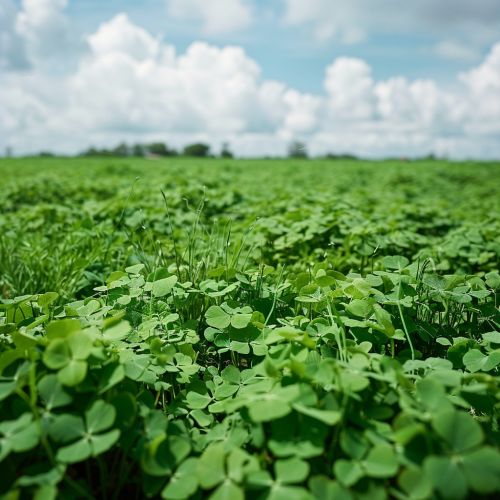Cover Cropping
Introduction
Cover cropping is a farming practice that involves the cultivation of specific plants, primarily for the benefit of the soil rather than the crop yield. These crops, known as cover crops, are typically grown in the off-season, when commercial crops are not being cultivated. The practice of cover cropping provides numerous benefits to both the soil and the environment, including soil erosion prevention, soil fertility improvement, weed suppression, and pest management.


History
The history of cover cropping extends back to ancient agricultural systems. Early farmers recognized the benefits of planting certain crops to protect and enrich the soil. The practice has evolved over the centuries, with modern farmers using scientific research to select the most beneficial cover crops for their specific needs.
Types of Cover Crops
Cover crops can be categorized into three main types: legumes, grasses, and brassicas. Each type has unique characteristics and benefits.
Legumes
Legumes are a popular choice for cover cropping due to their ability to fix nitrogen from the atmosphere into the soil. This process improves soil fertility, reducing the need for synthetic fertilizers. Common legume cover crops include clover, vetch, and peas.
Grasses
Grasses are often used as cover crops for their ability to prevent soil erosion. Their extensive root systems help to hold the soil in place, reducing the loss of topsoil due to wind and water erosion. Examples of grass cover crops include rye, oats, and barley.
Brassicas
Brassicas are a group of plants that include species like radishes and mustards. These plants are used as cover crops for their ability to suppress weeds and pests, and to break up compacted soil with their deep root systems.
Benefits of Cover Cropping
Cover cropping provides a range of benefits to the soil, the environment, and the farmer.
Soil Health
Cover crops improve soil health in several ways. They add organic matter to the soil, improving its structure and fertility. They also prevent soil erosion and compaction, and can help to break up hardpan, a dense layer of soil that can restrict plant growth.
Environmental Benefits
Cover crops also provide environmental benefits. They can reduce the need for synthetic fertilizers and pesticides, reducing pollution and protecting water quality. They also sequester carbon, helping to mitigate climate change.
Economic Benefits
For farmers, cover cropping can provide economic benefits. While there is an initial cost to plant the cover crops, the long-term benefits can outweigh these costs. Improved soil health can lead to higher crop yields, and reduced need for fertilizers and pesticides can result in cost savings.
Challenges and Limitations
While cover cropping provides many benefits, there are also challenges and limitations to its use. These include the cost and labor required to plant and manage the cover crops, the need for specialized equipment, and the potential for cover crops to harbor pests or diseases.
Future of Cover Cropping
The future of cover cropping looks promising, with ongoing research and development aimed at maximizing the benefits and minimizing the challenges. Advances in technology, such as precision agriculture, may also help to make cover cropping more efficient and effective.
